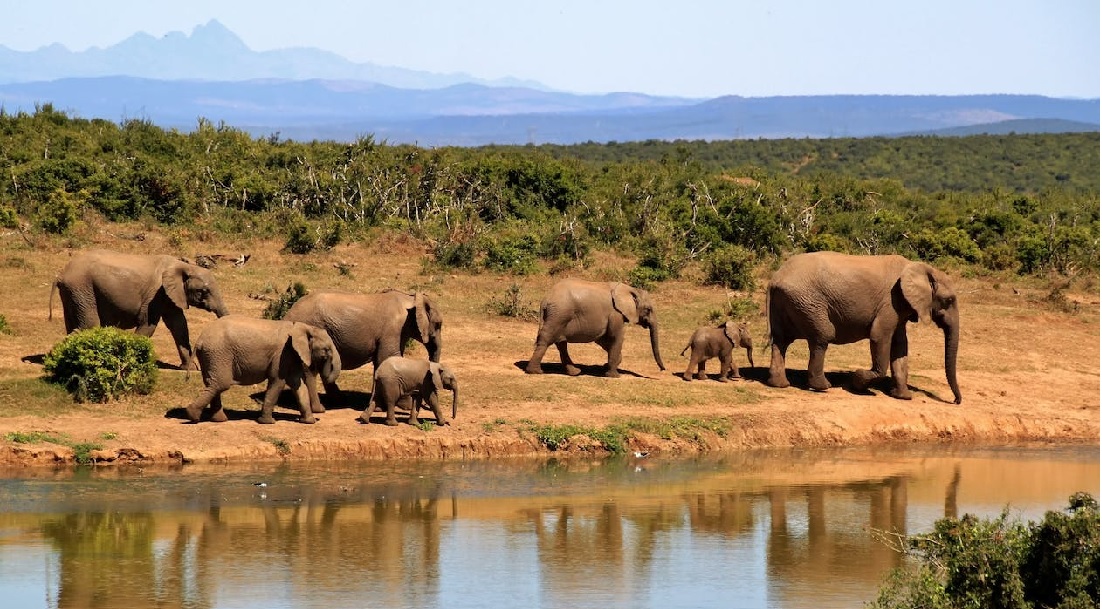Kaziranga National Park: A Haven for Wildlife Conservation and Biodiversity
Introduction
Kaziranga National Park, located in the northeastern state of Assam, India, is a remarkable testament to conservation efforts and a biodiversity hotspot. Spanning over 430 square kilometers, it is renowned for its population of the Indian one-horned rhinoceros, which is a UNESCO World Heritage Site. In this essay, we will delve into the history, ecology, wildlife, conservation efforts, challenges, and the significance of Kaziranga National Park in preserving India’s natural heritage.
Historical Background
Kaziranga National Park’s history dates back to the early 20th century when it was established as a protected area. It was officially declared a wildlife sanctuary in 1940 and later upgraded to a national park in 1974. The park’s origins can be traced to the pioneering conservation efforts of individuals like Mary Curzon, the wife of Lord Curzon, the Viceroy of India, who played a pivotal role in its establishment.
Ecology and Biodiversity
Kaziranga’s ecology is primarily characterized by its unique wetland habitat, dominated by tall elephant grass, dense forests, and numerous water bodies, including the Brahmaputra River, which flows alongside the park. This diverse landscape supports a wide variety of flora and fauna.
Flora: The park is home to a plethora of plant species, including tall grasses, reeds, aquatic plants, and several types of trees. The grasslands provide essential grazing habitat for herbivores, while the dense forests offer shelter and breeding grounds for various wildlife species.
Fauna: Kaziranga is renowned for its charismatic megafauna, including the Indian one-horned rhinoceros, Indian elephant, Bengal tiger, Asiatic water buffalo, and various species of deer, such as the sambar and hog deer. It is also a vital habitat for numerous bird species, with over 480 avian species recorded in the park, including the endangered Bengal florican and the great Indian hornbill.
Conservation Success Story
Kaziranga National Park is celebrated as a conservation success story, particularly for its efforts in saving the Indian one-horned rhinoceros from the brink of extinction. In the early 20th century, the rhino population was severely depleted due to rampant poaching and habitat loss. However, concerted conservation measures have led to a remarkable recovery.
Conservation Efforts:
- Anti-Poaching Measures: Kaziranga employs a dedicated team of forest guards, equipped with modern technology and trained to combat poaching. Their vigilance has significantly reduced rhino poaching incidents.
- Habitat Preservation: The park’s diverse habitat is meticulously maintained to ensure suitable living conditions for its inhabitants. Controlled burning and habitat management are crucial aspects of this effort.
- Community Involvement: Local communities surrounding the park are actively engaged in conservation efforts. Initiatives like community-based ecotourism provide economic incentives for people to protect the park.
- Translocation: Kaziranga has played a pivotal role in the translocation of Indian rhinoceros to other protected areas to establish new populations and reduce the risk of a single catastrophic event affecting the entire species.
Challenges and Conservation Concerns
While Kaziranga National Park has achieved significant success in rhinoceros conservation, it faces ongoing challenges:
- Human-Wildlife Conflict: The park’s proximity to human settlements leads to conflicts between wildlife, especially elephants, and local communities. Crop raiding and property damage are common issues.
- Habitat Fragmentation: Infrastructure development and human encroachment have led to habitat fragmentation, making it challenging for animals to move freely.
- Poaching Threat: Although rhino poaching has decreased, it remains a concern. Poachers target rhinos for their valuable horns, which are in high demand on the black market.
- Climate Change: Climate change poses threats to the park’s ecosystem, affecting water levels, vegetation, and the distribution of species.
- Invasive Species: Invasive plant species can outcompete native vegetation, altering the park’s ecological balance.
Significance and Future
Kaziranga National Park holds immense ecological, cultural, and economic significance:
- Biodiversity Conservation: Kaziranga is a sanctuary for diverse wildlife and a refuge for several endangered species. Its conservation success sets a precedent for other protected areas.
- Cultural Heritage: The park is intimately linked to the cultural identity of Assam, influencing art, folklore, and traditions.
- Ecotourism: Kaziranga attracts tourists from around the world, providing economic benefits to the region and raising awareness about conservation.
- Research and Education: The park serves as a valuable site for scientific research and environmental education, contributing to our understanding of biodiversity and ecology.
As Kaziranga National Park navigates the challenges of the 21st century, its future relies on continued conservation efforts, sustainable tourism, and community involvement. It stands as a testament to the possibilities of wildlife conservation and the importance of protecting our natural heritage for generations to come. Kaziranga serves as an inspiration and a reminder that, with dedication and cooperation, we can safeguard our planet’s precious biodiversity.

